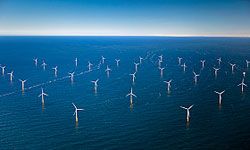At Delft University of Technology in the Netherlands, researchers are working on a novel, albeit somewhat distasteful, alternative to fossil fuels. They've developed a state-of-the-art toilet for use in developing countries that employs microwaves to chemically alter human waste into syngas, a mixture of carbon monoxide and hydrogen. This syngas can then be used in stacks of fuel cells to generate electricity. Hypothetically, one toilet could generate enough juice to power several village households, freeing them from dependence on coal or oil [source: FastCoexist.com].
At first glance, Delft's scheme to turn poop into power may seem a bit daft. But drastic times call for drastic measures, and many people categorize the state of our environment as drastic. We live on a planet of finite resources -- some of which are crucial to our survival, and others that harm the environment every time we use them.
Advertisement
Rather than wait for the oil wells to run dry and coastal cities to disappear beneath rising sea levels, many people are looking ahead to cleaner alternative sources of energy. Some of these energy sources, like solar power, hybrid-electric vehicles and small, hand-powered gadgets have already caught on. Others, however, like feces-fueled water heaters, may take a little getting used to.
Here, for your reading enjoyment, are 10 of the wackier ideas for alternative energy. Some of them are already available; others need a few more trial runs before they hit the market. Either way, if you're reading this during a self-imposed Earth Hour, hand-crank your flashlight and prepare to be surprised -- or even amused.




